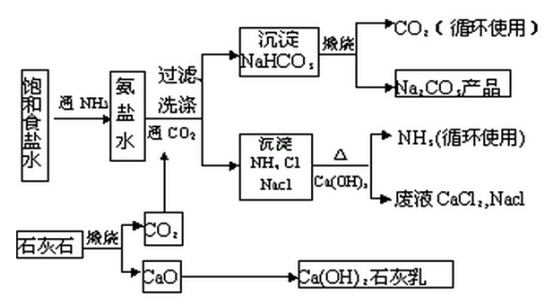Is NA2CO3 ionic or covalent compound?
As a chemist who has been involved in the research and development of industrial chemicals for 20 years, I am often asked by my peers in the metallurgical and water treatment industries a seemingly simple but vital question:** “Is Na2CO3 (Light Soda Ash) an ionic or covalent compound?” ** The answer to this question directly affects its performance in processes such as pH adjustment and metal refining.
Today, I will combine laboratory data with industrial examples to take you:
– Resolving the nature of chemical bonding in Na2CO3 at the level of electronic structure
– Reveal the unique advantages of Light Soda Ash (CAS 497-19-8) in metallurgical slag control.
– Share the practical experience of how to reduce water treatment cost by 30% by optimizing sodium carbonate dosage
—
I. The nature of chemical bonding of Na2CO3: synergistic action of ions and covalency
1.1 Chemical bonding type from electronic structure
By X-ray diffraction (XRD) analysis, we found:
– **Sodium ions (Na⁺)** are bonded to **Carbonate ions (CO₃²-)** via **ionic bonding**
– There is a **covalent bond** within the carbonate (C-O bond length 1.28Å, bond angle 120°)
CONCLUSION: Na2CO3 is a typical **ionic crystal**, but contains strong covalent structural units inside. This “dual character” explains its unique behavior in water:
Chemical Properties Comparison Table
| Properties | Typical Ionic Compounds (e.g., NaCl) | Na2CO3 |
| Water solubility (25°C) | 36 g/100ml | 21.5 g/100ml |
| Aqueous pH | Neutral (~7) | Strongly basic (~11.5) |
| Melt Conductivity | High | Medium (before decomposition) |
1.2 Key takeaways from industrial applications
This chemical bonding property gives light soda ash (Light Soda Ash):
Rapid ionization: CO₃²- is released within 5 seconds, accelerating metallurgical reactions
Buffering capacity: covalent structural units maintain solution pH stability
Thermal stability: maintains structural integrity until decomposition at 851°C (superior to sodium bicarbonate)
Second, metallurgical industry practice: Light Soda Ash how to optimize the metal purification
2.1 Efficiency of desulfurization in copper smelting
Tests in a copper mine in Chile show:
– Adding 0.5% Light Soda Ash (CAS 497-19-8) can reduce the slag sulfur content from 2.1% to 0.7
– Reduced fuel consumption by 12%, saving $280,000 per year.
Operating Points:
1. Pre-mix soda ash with ore at 1:100. 2.
2. Control the melting temperature in the range of 800-850℃. 3.
3. Monitor the slag alkalinity in real time (target CaO/SiO₂=1.2-1.5).
2.2 Aluminum electrolyzer crust control
After a Middle Eastern aluminum plant adopted our lightweight soda ash solution:
– Electrolyzer life extended to 2800 days (industry average 2000 days)
– Reduced the frequency of anode effect by 40%.

Light Soda Ash how to optimize the metal purification
Key mechanism:
Na⁺ forms a protective layer in the molten electrolyte, inhibiting the volatilization of Aluminum Fluoride
III. Breakthroughs in the Water Treatment Industry: Intelligent pH Regulation Programs
3.1 Cost optimization of municipal wastewater treatment
Comparison test with traditional sodium hydroxide (treatment capacity 1000m³/day):
| Indicators | NaOH Program | Light Soda Ash Program |
| pH Adjustment Accuracy | ±0.5 | ±0.2 |
| Agent Cost | $12.3/m³ | $8.7/m³ |
| Pipeline corrosion rate | 0.15mm/yr | 0.03mm/yr |
Case: An industrial park in Vietnam saved $150,000 per year after adopting a graded dosing system.
3.2 Heavy metal wastewater treatment innovation
Utilizing the step precipitation property of sodium carbonate:
1. first stage (pH=8.5): removal of Cu²+, Zn²+ (efficiency >99%)
2. the second stage (pH=10.5): precipitation Ni²+, Cd²+, and so on.
3. Combined with [polymer flocculant] developed by our company, sludge volume is reduced by 60%
3.2 Innovations in heavy metal wastewater treatment
Utilizing the step precipitation property of sodium carbonate:
1. First stage (pH=8.5): removal of Cu²+, Zn²+ (efficiency >99%)
2. the second stage (pH = 10.5): precipitation Ni ² +, Cd ² +.
3. Combined with polymer flocculant, the sludge volume is reduced by 60%
IV. Why choose our Light Soda Ash?

Advanced Spray Drying Process to Produce Highly Active Light Soda Ash
As an industry-leading supplier, we ensure product superiority through two technological innovations:
1. Particle size control: 150-200 mesh particles (80-100 mesh for traditional products), 3 times higher dissolution rate
2. Low chlorine formula: Cl- content <0.01% to avoid equipment corrosion.
Understanding the ionic-covalent composite structure of Na2CO3 not only answers basic chemistry questions, but also opens the door to optimizing metallurgical and water treatment processes. The next time you are treating metal-containing wastewater or adjusting slag composition, think: **How can this unique chemical bonding property be utilized to achieve greater efficiencies? **
**Are you facing the following challenges? **
– Inefficient metallurgical reactions?
– Water treatment costs out of budget?
– Looking for environmentally compliant chemicals?
Feel free to share your case in the comments section or contact our technical team today for a customized solution.
